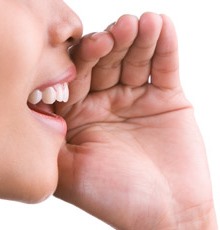Let’s begin this lesson by learning how to ask someone’s name. First, we need to learn a few new characters.
You can see the 口 radical, suggesting it’s related to the mouth. The right part looks a bit like a hand in front of the mouth, like you are about to “call” someone.
And indeed, this is the word “to call”. Try typing it below:
Next, we need to learn the question word “what”. It is made up of two characters.
You can see the 人 radical used here, although the “people” relationship isn’t obvious.
The other character needed is:
Together, 什麼 is the word “what”. Try typing it below:
The next word we’ll learn is also made up of 2 characters. The first is:
The bottom part is the 口 radical again, meaning it’s related to the mouth. The top part 夕 is actual from the word for sunset. So you can think of it as meaning “what you need to call someone at night”, which refers to a person’s “name”. This word requires a second character though:
We’ve seen the bottom part of this character before in 子. Do you remember what that means?
子 means “child”. In this case though, this radical suggests the sound of this character, rather than the meaning. The top part of the character uses a different radical 宀, which means “roof”.
字 on its own refers to a “written character”.
So together 名字 refers to your written name, or first name. Try typing it below:
We now know all the characters required to ask the question “What is your first name?” Literally that’s “you called what name”:
你叫什麼名字Try typing that question below:
You can answer this question by simply saying “I called” followed by your first name. Try saying “I called” below:
Next we’ll learn another radical:
This character refers to speech. What radical do you see at the bottom of this character?
The character looks like a 口 (mouth) with a tongue sticking out of it. You’ll see this radical (which is reduced to 讠in simplified form) used in different characters related to speech. Try typing it below:
We’ll now look at the word “thanks”. It’s the same character repeated.
Notice the 言 radical used again on the left, suggesting a relation to speech. To say thanks, we simply repeat this character twice to say 謝謝. Try typing that below:
You could also make it more polite by saying “Thank you”, by adding a 你 at the end. Try saying “Thank you” below:
“Goodbye” also uses two characters, but these are two different ones. The first one is:
This character is meant to look like a fish facing downwards, with the tail on top. It literally means “again”, while the next character:
means “to meet”. It looks like a big face standing on two legs.
Together, 再見 means “again meet” or “see you again”. Try typing 再見 below:
Let’s end off by looking at a short dialog that uses the characters and words we’ve learned in the last couple of lessons.
A: 你好.
B: 你好.
A: 你好嗎?
B: 我很好. 謝謝.
A: 你叫什麼名子
B: 我叫Adam
A: 再見
B: 再見
We’ll expand upon these words and phrases in our next lesson. In the meantime, try out the flashcard test for this lesson below. Good luck!
Flash Card Exercise
